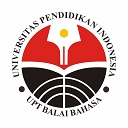The Use of Japanese Loanwords in Culinary Content on Instagram
Abstract
The purpose of this study is to examine the phenomenon of Japanese loanwords (gairaigo) used in culinary content on Instagram, and to describe the analytical framework of those meaning and formation. This study used descriptive qualitative method with data sources from 8 Instagram accounts of culinary content. This data in this study including 74 postings and 115 data of loanwords use from the Instagram accounts. The results from this study showed that lexical and word-formation structure that form the Japanese loanwords mostly were the compound word form (fukugougo) because many cuisine terms used two or more words. The results also showed that many of Japanese loanwords in culinary content are using derivative forms and acronyms. It is suggested that teachers and Japanese learners should be aware of these structure changes and semantic change in Japanese loanwords, which can help Japanese learners to understand the meaning of loanwords in Japanese.
Keywords
Full Text:
PDF (IND)References
Ashari, B. Y. (2018). Analisis Penggunaan Gairaigo di Media Sosial Twitter (Skripsi, Universitas Darma Persada). Diakses dari http://repository.unsada.ac.id/750/3/Bab%20IV.pdf
Garrett, R. K., & Danziger, J. N. (2007). IM=Interruption Management? Instant messaging and disruption in the workplace. Journal of Computer-Mediated Communication, 13(1), 23-42. https://doi.org/10.1111/j.1083-6101.2007.00384.x
Goddard, J.A. (2017). Recognition of English Loanwords (waseieigo) Among Japanese University Students. Kitasato Review, Annual Report of Studies in Liberal Arts, and Sciences 22. https://doi.org/10.20700/KITASATOCLAS.22.0_59
Howard, P. N. & Parks, M. R. (2012). Social Media and Political Change: Capacity, Constraint, and Consequence. Journal of Communication, 62(2), 359-362. http://dx.doi.org/10.1111/j.1460-2466.2012.01626.x
Kelvin, K. (2017). Analisis Perubahan Makna Gairaigo dalam Surat Kabar Asahi Shinbun Edisi April 2017 (Skripsi, Universitas Sumatera Utara). Diakses dari http://repositori.usu.ac.id/handle/123456789/5366
Matras, Y. (2009). Language Contact. Cambridge: Cambridge University Press.
Masuoka, T., & Takubo, Y. (2010). Kiso Nihongo Bunpou – Kaiteipan-. Tokyo: Kuroshio Shuuppan.
Olah, B. (2007). English Loanwords in Japanese Effects, Atitudes and Usage as a Means of Improving Spoken English Ability. Jurnal Penelitian Humaniora. 9(1), 177-188. doi=10.1.1.692.2892
Oshima, K. (2002). Semantic and Structural Shift Pattern of Gairaigo in Japan. Intercultural Communication Studies 9(4), 51-65. Diakses dari https://web.uri.edu/iaics/files/03-Kimie-Oshima.pdf
Raversa, A., & Haristiani, N. (2020, March). Can Japanese Speak in Pure Japanese?: The Inevitability of Gairaigo in Japanese. In 3rd International Conference on Language, Literature, Culture, and Education (ICOLLITE 2019) (pp. 175-180). Atlantis Press.
Sari, W. D. (2019). The Formation of abbreviated loanwords in japanese a study of ryakugo and toujigo in Asahi Shinbun digital website of automotive technology column. Japanedu, Jurnal Pendidikan dan Pengajaran Bahasa Jepang, 4(1), 37-45. https://doi.org/10.17509/japanedu.v4i1.17079
Sudjianto, S., & Dahidi, A. (2014). Pengantar Linguistik Bahasa Jepang. Jakarta: Kesaint Blanc.
Sutedi, D. (2011). Dasar-Dasar Linguistik Bahasa Jepang. Bandung: Humaniora.
Syahadatina, V. D. (2018). Bias Perempuan Dalam Postingan Akun Instagram (Analisis Semiotik pada Akun Indozonelife) (Skripsi, Universitas Muhammadiyah Malang). Diakses dari http://eprints.umm.ac.id/42694/
Tamaoka, K., & Miyaoka, Y. (2003). The cognitive processing of Japanese loanwords in katakana. Japanese. Psychological Research, 45(2), 69-79. https://doi.org/10.1111/1468-5884.t01-1-00035
Taprial, V., & Kanwar, P. (2012). Understanding Social Media. Diakses dari Ebooksdirectory.
Sumber lain
Imf-lab. (2020). Instagram de ninki no ryouri douga akaunto 10-sen to kigyou to no teikei jirei. Diakses dari https://collatech.co.jp/ifm-lab/instagram/instagram_business/5076
Statcounter Global Stats. Social Media Stats in Japan - July 2020. https://gs.statcounter.com/social-media-stats/all/japan.
https://www.researchgate.net/publication/233729903_Social_Media_and_Political_Change_Capacity_Constraint_and_Consequence
DOI: https://doi.org/10.17509/japanedu.v6i1.30177
Refbacks
- There are currently no refbacks.
Copyright (c) 2021 JAPANEDU: Jurnal Pendidikan dan Pengajaran Bahasa Jepang

This work is licensed under a Creative Commons Attribution-ShareAlike 4.0 International License.
 Published by:
Published by: Department of Japanese Language Education, Faculty of Language and Literature Education
Universitas Pendidikan Indonesia
 Online ISSN: Online ISSN:2528-5548 |

JAPANEDU: Jurnal Pendidikan dan Pengajaran Bahasa Jepang (e-ISSN:2528-5548) lisenced under a Creative Commons Attribution-ShareAlike 4.0 Internasional (CC BY-SA 4.0)


